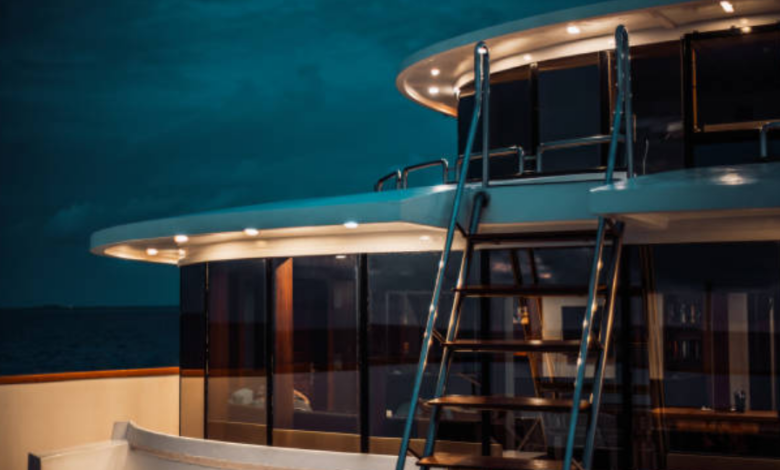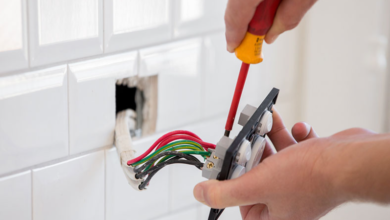The Ultimate Guide to Choosing Boat Marine Lights

Boating is a relaxing and enjoyable experience, but it comes with responsibilities, especially when it comes to safety on the water. One of the most critical aspects of safe boating is proper lighting. Boat marine lights not only enhance the appearance of your vessel but also ensure you comply with safety regulations and navigate safely during nighttime or low-visibility conditions. This guide will help you understand the types, benefits, and selection tips for the perfect marine lighting setup.
Understanding the Importance of Boat Marine Lights
Safety and Navigation
The primary function of marine lights is to ensure safety on the water. Proper lighting allows other vessels to identify your boat, understand its direction, and prevent collisions. Navigational lights, including red, green, and white lights, indicate your boat’s position and movement, which is essential for nighttime boating.
Without appropriate boat marine lights, your vessel could be at risk during dark or foggy conditions. Investing in quality boat marine lights ensures that your boating adventures remain safe for you and others.
Enhancing Aesthetics and Functionality
Modern marine lights do more than just provide safety. They enhance the overall look of your vessel and can create a welcoming ambiance on deck. LED lighting, in particular, offers vibrant colors, energy efficiency, and a sleek appearance that complements any boat design.
Functionality is equally important. Good marine lights provide sufficient illumination for tasks such as docking, fishing, and entertaining guests, making your boating experience more enjoyable and convenient.
Types of Boat Marine Lights
Navigational Lights
Navigational lights are mandatory on all vessels. They indicate your boat’s position, heading, and status to other boaters. These typically include:
- Red and Green Side Lights: Show the port and starboard sides of the vessel.
- White Stern Light: Indicates the rear of the boat.
- Masthead Light: Displays the boat’s forward direction.
Choosing high-quality, reliable navigational lights is crucial to ensure compliance with maritime laws and to improve safety during nighttime navigation.
Anchor Lights
Anchor lights are used when a boat is stationary at night or in low-visibility conditions. They alert other boaters to the presence of your vessel. White lights with a 360-degree view are standard and essential for safety, especially in crowded waters.
Deck and Interior Lights
Deck and interior lighting enhances visibility and creates a pleasant environment on board. These lights are useful for entertaining guests, performing maintenance tasks, or simply navigating the boat safely at night. LED strip lights, spotlights, and floodlights are popular choices due to their energy efficiency and bright illumination.
Specialty and Accent Lights
Specialty lights such as underwater lights, courtesy lights, and color-changing LEDs add style and personality to your boat. They improve visibility and create a unique ambiance that enhances the boating experience.
Key Factors to Consider When Choosing Boat Marine Lights
Brightness and Visibility
The primary goal of marine lights is to provide clear visibility for both the boat operator and other vessels. Choose lights that offer sufficient brightness without causing glare. LED lights are popular because they provide intense illumination while consuming less power.
Durability and Water Resistance
Marine lights must withstand harsh conditions, including saltwater, sun exposure, and heavy vibrations. Look for lights with high-quality, weather-resistant materials and IP ratings that indicate water and dust resistance. Durable lights reduce the need for frequent replacements and ensure reliable performance.
Energy Efficiency
Boats have limited power supply, making energy efficiency a key consideration. LED boat marine lights consume significantly less power than traditional incandescent bulbs while offering longer lifespans. Energy-efficient lights allow you to use more lighting features without overloading the electrical system.
Installation and Maintenance
Easy installation and low maintenance are important for marine lights. Look for products with straightforward mounting options and minimal upkeep requirements. Some lights come with plug-and-play designs, making installation faster and more convenient for boat owners.
Compliance with Regulations
Ensure that the lights you choose meet local maritime regulations. Approved navigational and anchor lights are mandatory, and failure to comply can lead to fines or safety hazards. Always check that your marine lights adhere to Coast Guard or local boating authority standards.
Tips for Upgrading Your Boat Lighting
Plan Your Layout
Before purchasing lights, plan your boat lighting layout carefully. Determine areas where lighting is needed most, such as the helm, deck, and interior spaces. Proper planning ensures effective illumination and avoids unnecessary clutter.
Combine Function and Style
Balance functional and decorative lighting. Functional lights provide safety and visibility, while accent lights add aesthetic appeal. Combining both types enhances your boating experience without compromising safety.
Regular Maintenance
Even the best marine lights require occasional maintenance. Check wiring, connections, and light performance regularly. Clean lenses and replace bulbs as needed to maintain brightness and safety.
Conclusion
Choosing the right boat marine lights is essential for safety, functionality, and aesthetics. From navigational and anchor lights to deck and specialty lighting, the options are numerous. Focus on brightness, durability, energy efficiency, and compliance to ensure a safe and enjoyable boating experience.
To explore high-quality marine lighting solutions and find the perfect setup for your vessel, visit Boat Marine Lights. Properly selected and installed lights will transform your boating experience, keeping you safe, stylish, and illuminated on the water.




